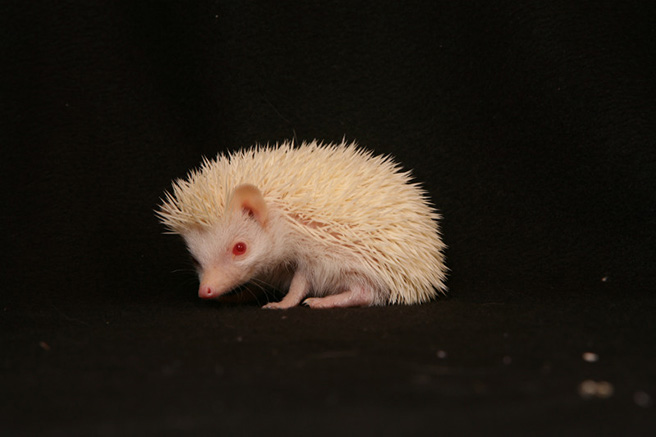The Cute, but Tough, African Hedgehog

Africa is full of iconic species: lions, elephants, rhinos, cheetahs, and more. Look closer to the ground, though, and you may just spot a species not typically associated with African safaris.
The African pygmy hedgehog, or four-toed hedgehog, can be found across much of Eastern, Western, and Central Africa. They weigh in between one and two lbs. and are seven to nine inches long.
Their tiny bodies are covered with about 6,000 quills, which are usually used as a defense mechanism, although people also consider the hedgehog’s skin and quills to be good fertility charms. A hedgehog’s quills are harder and sharper than a porcupine’s.
When a hedgehog gets scared, it curls up into a ball so that its quills are pointing in all different directions, making it very unappealing to predators. Hedgehogs have a special circular muscle that runs along the sides of its body and across its neck and butt. When this muscle contracts, it creates a “bag” for the hedgehog to put its head, body, and legs in as it curls up. Hedgehogs also sleep rolled up, just in case.
Although hedgehogs have many predators, including large birds and most carnivores, but only the strongest predators, like badgers, can open a curled-up hedgehog.
> Sign up for our newsletter to explore how people and wildlife can thrive in Africa
When looking for a home, a hedgehog has a few requirements. They need a dry shelter, well-drained soil, and an abundance of the insects they love to eat. They have begun to move into suburban areas, which are ideal habitats for them.
Because they eat many bugs considered to be pests, though, people are often glad to have a hedgehog around.
Hedgehogs love to eat insects, earthworms, snails, and slugs, and they also eat eggs, small mammals, birds, frogs, reptiles, fruit, fungi, and roots. They have also been known to eat poisonous snakes, even though they are not completely immune to the toxins (they do have enough immunity to make it safe, though).

When the desert temperatures get to be too hot and food becomes scarce, hedgehogs will aestivate. This is the summer version of hibernation; the extreme heat causes the hedgehog to go into hiding, lower its metabolic rate, and live off of the stored fat in its body until it is able to go back outside. While similar to hibernation, the hedgehog does not sleep as deeply or for as long while it aestivates.
The IUCN currently lists the four-toed hedgehog in the “least concern” category, meaning that the population is large and stable.
Of course, this does not mean that they are not facing any threats. Hedgehogs are losing more and more of their habitat to human development. Also, as the human population expands, more roads are built, which results in more hedgehogs being hit and killed by cars.
AWF is working to help make sure that hedgehog habitat is kept safe for years to come. They are educating the local communities about how to use sustainable practices to expand without disrupting the harmony with the wildlife around them. AWF is also bringing more conservation tourism to areas with a lot of wildlife, giving the communities an incentive to protect what is around them.
So, if you are ever on safari in Africa, just remember that if you take a break from looking at the giraffes, lions, and zebras and look down at the ground, you might just see a little African pygmy hedgehog wandering around.